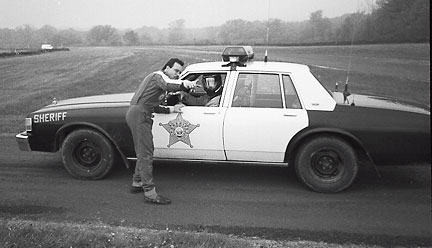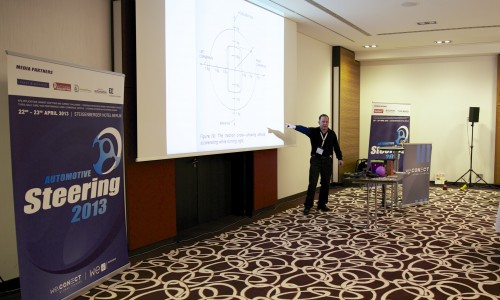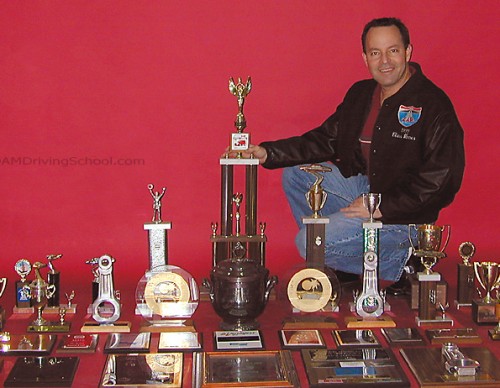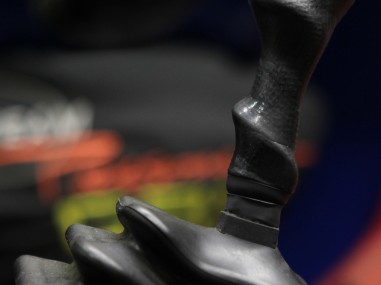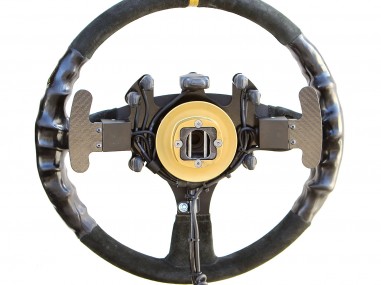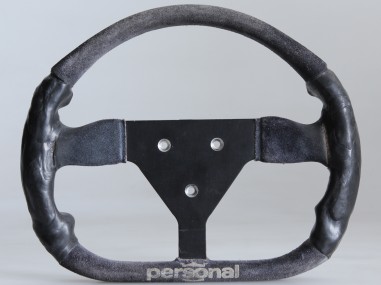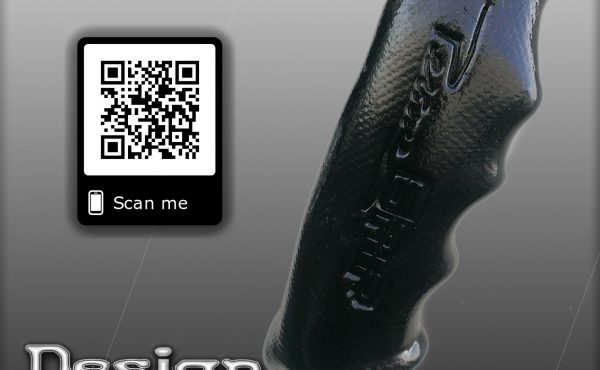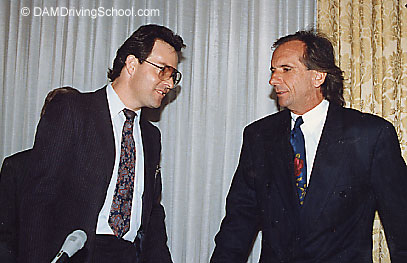Dellis Motorsports Resume (click)
The blue/white Lister #007 LITERALLY stops traffic…especially in combination with a model waving a Checkered Flag on the front line. Drivers stopping to check out #007 are candidates for any high-performance car on a lot…guaranteed.
Hair-raising 7000-rpm REVS recorded on smartphones are sure to spread online ensuring long-lasting returns on your investment for years to come. This music comes courtesy of a trumpeted side-draft fuel injection system mounted on a 400 cu-in Donovan aluminum block that echoes sounds from a gear drive, Crower roller racing camshaft and shaft rockers, and a Spiral Turbo Baffle exhaust system.
…AND Dellis is definitely not shy about sharing the music upon request, either.
Once Dellis starts talking, his matter-of-fact style of sharing driving secrets and racing stories one-on-one is engaging to both enthusiasts and casual prospects alike.
FREE — Driving Instruction
Displaying the word FREE below the car piques curiousity from passers by, too.
The free driving lessons are newsworthy with members of the media for which Dellis knows well as a full-journalist member of the Motor Press Guild.
Distracted Drivers — 1st-Hand Experience
With very high-performance cars now in the hands of Distracted Drivers, a certain amount of social responsibility goes with selling these cars. Dellis knows since he was literally killed by a distracted driver on New Year’s Eve ’04…he has spoken about the experience 3x on the radio, so far.
CARE Ambulance was taking his body to the morgue at Garden Grove Memorial Hospital just before specialists at UCI Medical Center were able to revive him. Dellis is currently writing a book about the experience called Before I Die Again.
Including FREE 1-HR Driving Lessons from a death-defying instructor with each purchase is especially newsworthy today, and Dellis’ on-camera experience allows him to comfortably explain the purpose of providing instruction to new customers.
Dellis’ high-performance driving instruction dates back to the mid-80s when he taught Police Pursuit Driving at the Bobby Rahal TrackTime Driving Schools and before that at Skip Barber. His mechanical engineering degree gives him insight into the physics involved, but his ability to explain it in plain English is where Dellis shines.
Every driver is different.
Lessons begin by studying both hand- and foot-work in a low-pressure environment so drivers can adjust their seats properly. The object is eliminate distractions inside the cockpit and be in perfect harmony with the controls in the car.
Once the customer is comfortable, then safe lines through turns are learned. Speeds are slowly increased until car control is developed using a disciplined, step-by-step process.


